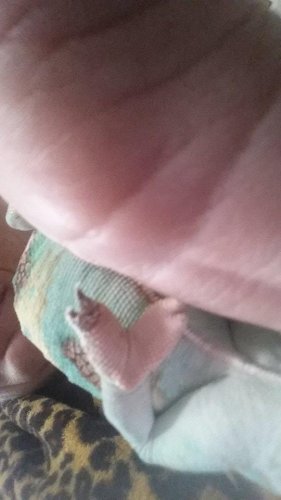ShariKitty
New Member
My male chameleon has a bizarre situation with his back foot.
I consulted with a vet and got nowhere. Figured I try an experienced group.
My hubby noticed his toes looking black a week or two ago. I went and looked and they looked fine. Just assumed that he was mid color change as he does turn almost black when he's grumpy (which is almost all the time). Because I know they can stress (and he is the prime example) I don't hold him much but we do observe him every day.
Last night in preparation for our "cold snap" I bought him into the house to put him in into a temp cage. As hubby was fixing up the cage I was holding Picasso and noticed his back right foot is indeed now totally black and he's missing a toe! I think the part that concerns me the most is the underside of his foot - where the scales (?) are light pink are gone as well. That area of the foot is also very dry. It's very similar to a gecko losing its tail/toes to a bad shed but he has had no signs of bad sheds.
The best I got is maybe a burn. But unlike what I think of with a burn (red, gooey, wet) this would be more akin to a ridiculously over cooked piece of meat.
Like I said - I'm stumped. Figured I'd ask. Thanks.

I consulted with a vet and got nowhere. Figured I try an experienced group.
My hubby noticed his toes looking black a week or two ago. I went and looked and they looked fine. Just assumed that he was mid color change as he does turn almost black when he's grumpy (which is almost all the time). Because I know they can stress (and he is the prime example) I don't hold him much but we do observe him every day.
Last night in preparation for our "cold snap" I bought him into the house to put him in into a temp cage. As hubby was fixing up the cage I was holding Picasso and noticed his back right foot is indeed now totally black and he's missing a toe! I think the part that concerns me the most is the underside of his foot - where the scales (?) are light pink are gone as well. That area of the foot is also very dry. It's very similar to a gecko losing its tail/toes to a bad shed but he has had no signs of bad sheds.
The best I got is maybe a burn. But unlike what I think of with a burn (red, gooey, wet) this would be more akin to a ridiculously over cooked piece of meat.
Like I said - I'm stumped. Figured I'd ask. Thanks.




